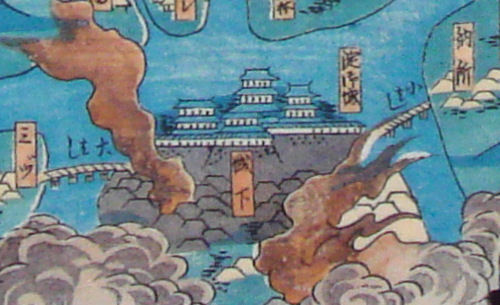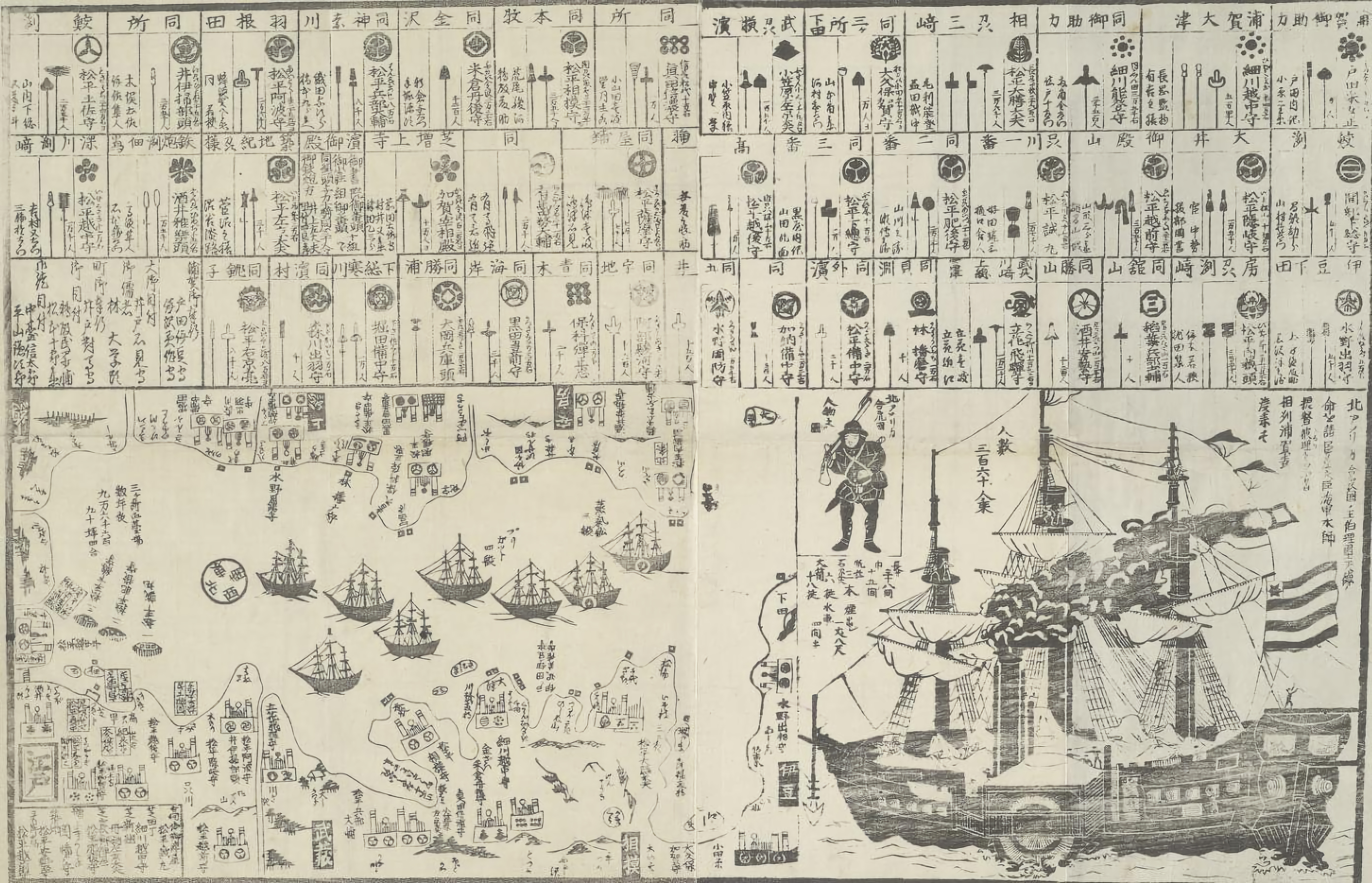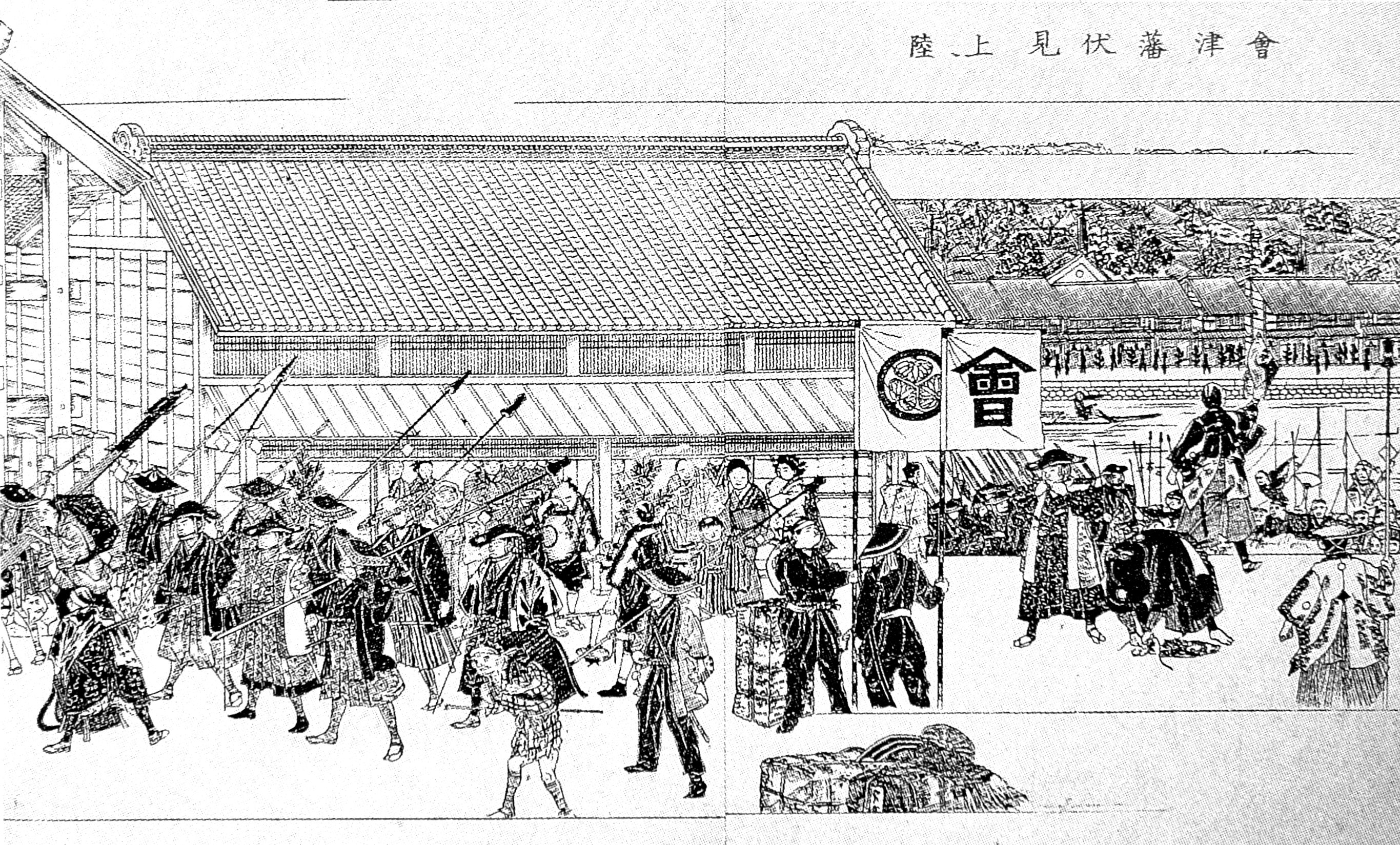|
Niwa Nagatomi
was an Edo period Japanese samurai, and the 9th ''daimyō'' of Nihonmatsu Domain in the Tōhoku region of Japan. He was the 10th hereditary chieftain of the Niwa clan. His courtesy title was ''Saikyō-no-daifu'', and his Court rank was Junior Fourth Rank, Lower Grade. Biography Nagatomi, known in his childhood as Kakuzō (覚蔵) and later Bankichi (蕃吉), was born in the clan's Edo residence in 1803. He was the eldest son of the previous ''daimyō'', Niwa Nagaakira by a concubine. At age 11, on the death of his father, he became ''daimyō'' of Nihonmatsu. Due to his youth, he relied heavily on his ''karō'', Niwa Takaaki. He encouraged his retainers to excel in both martial and literary arts, and to that end, sponsored the opening of the han school, Keigakukan (敬学館). In 1822, he was forced to deploy domain forces to put down a peasant uprising. He also helped revive the domain's economic situation following a seven-year string of famines during the Tenpō era. ... [...More Info...] [...Related Items...] OR: [Wikipedia] [Google] [Baidu] |
Mon Niwa
Mon, MON or Mon. may refer to: Places * Mon State, a subdivision of Myanmar * Mon, India, a town in Nagaland * Mon district, Nagaland * Mon, Raebareli, a village in Uttar Pradesh, India * Mon, Switzerland, a village in the Canton of Grisons * Anglesey, cy, Môn, links=no, an island and county of Wales * Møn, an island of Denmark * Monongahela River, US or "The Mon" Peoples and languages * Mon people, an ethnic group from Burma * Mon language, spoken in Burma and Thailand * Mon–Khmer languages, a large language family of Mainland Southeast Asia * Mongolian language (ISO 639 code), official language of Mongolia * Alisa Mon, Russian singer Other uses * Mon (emblem), Japanese family heraldic symbols * Mon (architecture), gates at Buddhist temples, Shinto shrines and castles in Japan * Mon (boat), a traditional war canoe of the North Solomons * Mon (currency), a currency used in Japan until 1870 * Môn FM, a radio station serving Anglesey, Wales * ''The Gate'' (novel) (), a 191 ... [...More Info...] [...Related Items...] OR: [Wikipedia] [Google] [Baidu] |
List Of Japanese Court Ranks, Positions And Hereditary Titles
The court ranks of Japan, also known in Japanese as ''ikai'' (位階), are indications of an individual's court rank in Japan based on the system of the state. ''Ikai'' as a system was originally used in the Ritsuryo system, which was the political administration system used in ancient China, and the indication of the rank of bureaucrats and officials in countries that inherited (class system). Currently, the Japanese court ranks and titles are now one of the types of honours conferred to those who have held government posts for a long time and to those who have made distinguished achievements. In recent times, most appointments, if not all, are offered posthumously. A recent recipient of such a court rank is the late former prime minister Shinzo Abe Shinzo Abe ( ; ja, 安倍 晋三, Hepburn romanization, Hepburn: , ; 21 September 1954 – 8 July 2022) was a Japanese politician who served as Prime Minister of Japan and President of the Liberal Democratic Party (Japan), Pres ... [...More Info...] [...Related Items...] OR: [Wikipedia] [Google] [Baidu] |
Rōjū
The , usually translated as '' Elder'', was one of the highest-ranking government posts under the Tokugawa shogunate of Edo period Japan. The term refers either to individual Elders, or to the Council of Elders as a whole; under the first two ''shōguns'', there were only two ''Rōjū''. The number was then increased to five, and later reduced to four. The ''Rōjū'' were appointed from the ranks of the ''fudai daimyōs'' with domains of between 25,000 and 50,000 ''koku''. Duties The ''Rōjū'' had a number of responsibilities, most clearly delineated in the 1634 ordinance that reorganized the government and created a number of new posts: :#Relations with the Emperor, the Court, and the Prince-Abbots. :#Supervision of those ''daimyō'' who controlled lands worth at least 10,000 ''koku''. :#Managing the forms taken by official documents in official communications. :#Supervision of the internal affairs of the Shogun's domains. :#Coinage, public works, and enfiefment. :#Governmental ... [...More Info...] [...Related Items...] OR: [Wikipedia] [Google] [Baidu] |
Yodo Domain
The was a Japanese domain of the Edo period, and the only domain located in Yamashiro Province. Its castle was located within modern-day Fushimi, Kyoto. The strategic location of the castle figured in the 1582 Battle of Yamazaki. During the 1868 Battle of Toba–Fushimi, the master of Yodo changed his allegiance from the Shogunate to Imperial forces, going as far as closing his gate and refusing protection to the retreating army of the ''shōgun'' Tokugawa Yoshinobu. List of lords * Matsudaira (Hisamatsu) clan ( Shinpan; 35,000 koku) #Sadatsuna *Nagai clan ( Fudai; 100,000→736,000 koku) # Naomasa #Naoyuki *Ishikawa clan ( Fudai; 60,000 koku) #Noriyuki #Yoshitaka #Fusayoshi * Matsudaira (Toda) clan ( Fudai; 60,000 koku) #Mitsuhiro #Mitsuchika * Matsudaira (Ogyū) clan ( Fudai; 60,00 koku) #Norisato *Inaba clan ( Fudai; 102,000 koku The is a Chinese-based Japanese unit of volume. 1 koku is equivalent to 10 or approximately , or about . It converts, in turn, to ... [...More Info...] [...Related Items...] OR: [Wikipedia] [Google] [Baidu] |
Inaba Masakuni
was a Japanese ''daimyō'' of the late-Edo period.Meyer, Eva-Maria"Gouverneure von Kyôto in der Edo-Zeit". Universität Tübingen (in German). In the Edo period, the Makino were identified as one of the '' fudai'' or insider ''daimyō'' clans which were hereditary vassals or allies of the Tokugawa clan, in contrast with the '' tozama'' or outsider clans.Appert, Georges. (1888) ''Ancien Japon'', p. 67./ref> Inaba clan genealogy The ''fudai'' Inaba clan originated in Mino Province. They claim descent from Kōno Michitaka (d. 1374),Papinot, Jacques. (2003)''Nobiliare du Japon'' -- Inaba, p. 15 Papinot, Jacques Edmond Joseph. (1906). ''Dictionnaire d’histoire et de géographie du Japon.'' (in French/German). who claimed descent from Emperor Kammu (736–805). Masakuni was part of the cadet branch of the Inaba which was created in 1588. This branch is descended from Inaba Masanari, who fought in the armies of Nobunaga and then Hideyoshi. In 1619, Masanari was granted the '' h ... [...More Info...] [...Related Items...] OR: [Wikipedia] [Google] [Baidu] |
Inaba Clan
The were a ''samurai'' kin group which rose to prominence in the Sengoku period and the Edo periods.Meyer, Eva-Maria"Gouverneure von Kyôto in der Edo-Zeit". Universität Tübingen (in German) Under the Tokugawa shogunate, the Inaba, as hereditary vassals of the Tokugawa clan, were classified as one of the '' fudai'' ''daimyō'' clans.Appert, Georges. (1888) ''Ancien Japon,'' p. 75/ref> Inaba clan genealogy The Inaba clan originated in 16th century Mino Province,Appert, Georges. (1888) ''Ancien Japon'', p. 67./ref> and claimed descent from Kōno Michitaka (died 1374), Papinot, Edmond. (2003)''Nobiliare du Japon'' -- Inaba, p. 15 Papinot, Jacques Edmond Joseph. (1906). ''Dictionnaire d’histoire et de géographie du Japon.'' (in French/German). who claimed descent from Emperor Kanmu (736–805). Main branch The senior branch of the Inaba are descended from Inaba Sadamichi (1551–1606), who was raised in rank by Oda Nobunaga in 1564. He was established in 1585 at Hachiman Dom ... [...More Info...] [...Related Items...] OR: [Wikipedia] [Google] [Baidu] |
Arima Yoritaka
Arima, officially The Royal Chartered Borough of Arima is the easternmost and second largest in area of the three boroughs of Trinidad and Tobago. It is geographically adjacent to Sangre Grande and Arouca at the south central foothills of the Northern Range. To the south is the Caroni–Arena Dam. Coterminous with Town of Arima since 1888, the borough of Arima is the fourth-largest municipality in population in the country (after Port of Spain, Chaguanas and San Fernando). The census estimated it had 33,606 residents in 2011. In 1887, the town petitioned Queen Victoria for municipal status as part of her Golden Jubilee celebration. This was granted in the following year, and Arima became a Royal Borough on 1 August 1888. Historically the third-largest town of Trinidad and Tobago, Arima is fourth since Chaguanas became the largest town in the country. Geography Climate The borough has a tropical rainforest climate (Köppen ''Af''), bordering on a tropical monsoon clima ... [...More Info...] [...Related Items...] OR: [Wikipedia] [Google] [Baidu] |
Perry Expedition
The Perry Expedition ( ja, 黒船来航, , "Arrival of the Black Ships") was a diplomatic and military expedition during 1853–1854 to the Tokugawa Shogunate involving two separate voyages by warships of the United States Navy. The goals of this expedition included exploration, surveying, and the establishment of diplomatic relations and negotiation of trade agreements with various nations of the region; opening contact with the government of Japan was considered a top priority of the expedition, and was one of the key reasons for its inception. The expedition was commanded by Commodore Matthew Calbraith Perry, under orders from President Millard Fillmore. Perry's primary goal was to force an end to Japan's 220-year-old policy of isolation and to open Japanese ports to American trade, through the use of gunboat diplomacy if necessary. The Perry Expedition led directly to the establishment of diplomatic relations between Japan and the western Great Powers, and eventually to the ... [...More Info...] [...Related Items...] OR: [Wikipedia] [Google] [Baidu] |
Tokugawa Shogunate
The Tokugawa shogunate (, Japanese 徳川幕府 ''Tokugawa bakufu''), also known as the , was the military government of Japan during the Edo period from 1603 to 1868. Nussbaum, Louis-Frédéric. (2005)"''Tokugawa-jidai''"in ''Japan Encyclopedia'', p. 978.Nussbaum"''Edo-jidai''"at p. 167. The Tokugawa shogunate was established by Tokugawa Ieyasu after victory at the Battle of Sekigahara, ending the civil wars of the Sengoku period following the collapse of the Ashikaga shogunate. Ieyasu became the ''shōgun,'' and the Tokugawa clan governed Japan from Edo Castle in the eastern city of Edo (Tokyo) along with the ''daimyō'' lords of the ''samurai'' class.Nussbaum"Tokugawa"at p. 976. The Tokugawa shogunate organized Japanese society under the strict Tokugawa class system and banned most foreigners under the isolationist policies of ''Sakoku'' to promote political stability. The Tokugawa shoguns governed Japan in a feudal system, with each ''daimyō'' administering a ''han'' (f ... [...More Info...] [...Related Items...] OR: [Wikipedia] [Google] [Baidu] |
Futtsu, Chiba
260px, Futtsu City Hall is a city located in Chiba Prefecture, Japan. , the city had an estimated population of 42,476 in 18,115 households and a population density of 210 persons per km². The total area of the city is . Geography Futtsu is located in the southern part of Chiba prefecture, about 40 kilometers from the prefectural capital at Chiba and 40 to 50 kilometers from the center of Tokyo. It is on the southwest coast of Bōsō Peninsula, facing the Uraga Channel at the southern end of Tokyo Bay. Cape Futtsu protrudes into Tokyo Bay, and the coastal areas are part of the Minami Bōsō Quasi-National Park. Although considered to be within the Kantō Plain, inland areas of the city are hilly. Neighboring municipalities Chiba Prefecture *Kimitsu * Kamogawa * Kyonan Climate Futtsu has a Humid subtropical climate (Köppen ''Cfa'') characterized by warm summers and cool winters with light to no snowfall. The average annual temperature in Futtsu is 15.7 °C. The averag ... [...More Info...] [...Related Items...] OR: [Wikipedia] [Google] [Baidu] |
Aizu Domain
was a domain of the Tokugawa Shogunate of Japan during the Edo period from 1601 to 1871.Ravina, Mark. (1998) ''Land and Lordship in Early Modern Japan,'' p. 222 The Aizu Domain was based at Tsuruga Castle in Mutsu Province, the core of the modern city of Aizuwakamatsu, located in the Tōhoku region of the island of Honshu. The Aizu Domain was ruled for most of its existence by the '' shinpan'' ''daimyō'' of the Aizu-Matsudaira clan, a local cadet branch of the ruling Tokugawa clan, but was briefly ruled by the '' tozama'' ''daimyō'' of the Gamō and Katō clans. The Aizu Domain was assessed under the '' Kokudaka'' system with a peak value of 919,000 '' koku'', but this was reduced to 230,000 ''koku''. The Aizu Domain was dissolved in the abolition of the ''han'' system in 1871 by the Meiji government and its territory was absorbed into Fukushima Prefecture, covering much of the traditional region of Aizu. History Pre-Edo period The area of Kurokawa, later called "Waka ... [...More Info...] [...Related Items...] OR: [Wikipedia] [Google] [Baidu] |
Tenpō
was a after ''Bunsei'' and before ''Kōka.'' The period spanned from December 1830 through December 1844. The reigning emperor was . Introduction Change of era * December 10, 1830 () : In the 13th year of ''Bunsei'', the new era name of ''Tenpō'' (meaning "Heavenly Imperial Protection") was created to mark the disasters of a great fire in Edo and an earthquake at Kyoto. The new era name was created from an hortatory aphorism: "Respect and worship the Ways of heaven. Eternally keep the Mandate of Heaven" (欽崇天道、永保天命). The Tenpō era is often described as the beginning of the end of bakufu government. Though the era accomplished much through its reforms, and also culturally speaking, the injury inflicted on the Tokugawa system of government during the Tenpō period was unparalleled. Public order and dissatisfaction with government was a main issue, but the bakufu was not entirely at fault for the stir amongst the people. For example, the failure of crops in ... [...More Info...] [...Related Items...] OR: [Wikipedia] [Google] [Baidu] |




